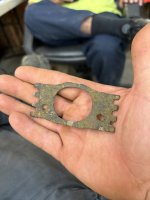Nitric
Silver Member
This may sound really dumb! And I know everyone has been down the road of answering these kind of questions often! lol
Just because I'm curious....Ok, for the guys that are at prospecting and mining pretty hard, what would be a realistic gram per hour or gram per day average? I'm meaning this question for the guys that hit it hard. Small scale 1 to 3 person group. How rare would it be to find a place that produces a gram or a gram in a half an hour? Is this almost non existent, common,etc...? What do you look for in claims? I hear all kinds of different things...
Do you or know anyone averaging this or better, consistently?
Just because I'm curious....Ok, for the guys that are at prospecting and mining pretty hard, what would be a realistic gram per hour or gram per day average? I'm meaning this question for the guys that hit it hard. Small scale 1 to 3 person group. How rare would it be to find a place that produces a gram or a gram in a half an hour? Is this almost non existent, common,etc...? What do you look for in claims? I hear all kinds of different things...
Do you or know anyone averaging this or better, consistently?
Upvote
0











